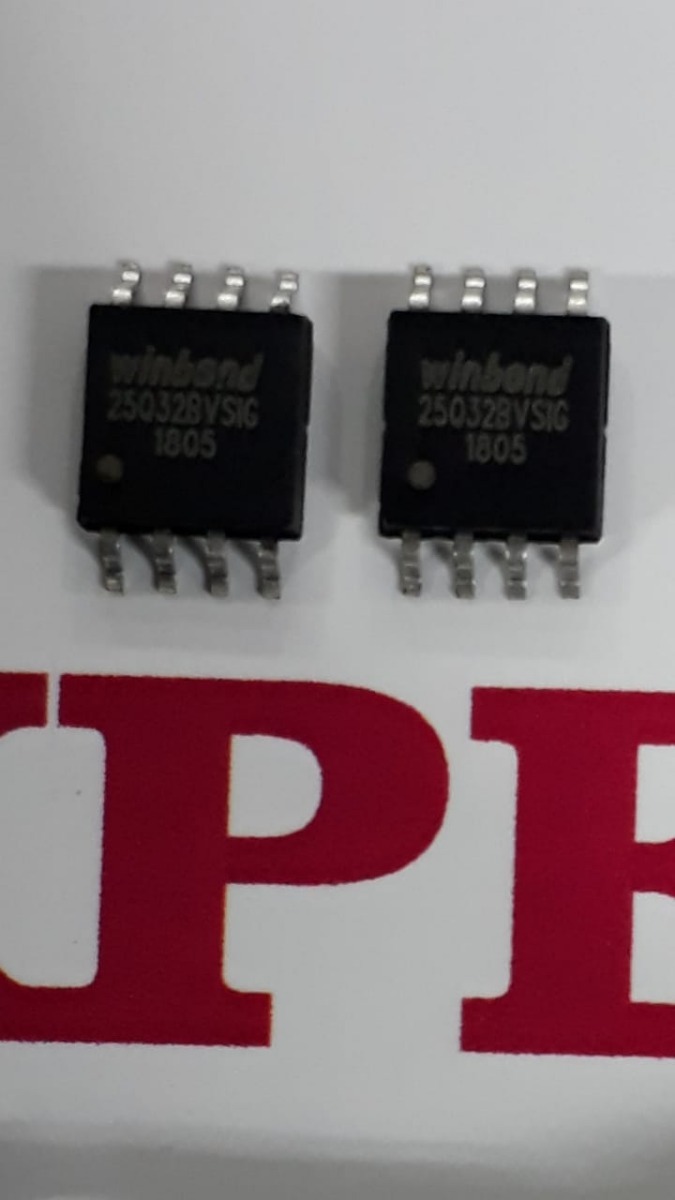Winbond 25q32 Programmator

This is origional WINBOND 4MB SPI Memory chip. WINBOND W25Q32 Flash Memory Chip 32Mbit 4MB Price in Pakistan. Categories: Programmer Components, SPI Flash Memory, Components, ProgrammersTags: W25Q128, W25Q32,. Spansion S70FL01GS (1Gbit) Micron M25P16 (16Mbit) MXIC MX25L20 (2Mbit) PMC PM25LV010 (1Mbit). eBay! HYHYNIX HY29LV1600T Samsung K8D1716UT MXIC 29LV320T TOSHIBA TC58FVT321. SPI and I2C Flash Programmer WINBOND ST PMC MXIC ST SST ATMEL BIOS CMOS EEPROM eBay.
Hello community, I am attempting to flash (or at present probe) the Winbond 25Q64 BIOS chip on a motherboard using the Bus Pirate. I went about this in the most common sense way, but it didn’t work; so I troubleshot until I found what I believe to be the problem. I may have overlooked something simple, however, so I will be giving a detailed account of exactly what I have done (so be prepared for a long post). First, the chip I am trying to flash is the Winbond 25Q64BV, whose datasheet is. Anyway, it is an 8-pin package, but two of the pins (write-protect and hold) are not relevant to me. So I use the following connections: Code: Bus Pirate W25Q64BV CS /CS 3.3V VCC MISO DO CLK CLK GND GND MOSI DI Simple enough.
Then, I use flashrom to try to probe the chip: Code: $ flashrom -VVV -c W25Q64 -p buspirate_spi:dev=/dev/ttyUSB0 flashrom v0.9.5.2-r1540 on Linux 3.3.3-gentoo (x86_64) flashrom is free software, get the source code at flashrom was built with libpci 3.1.9, GCC 4.6.2, little endian Command line (5 args):./flashrom -VVV -c W25Q64 -p buspirate_spi:dev=/dev/ttyUSB0 Calibrating delay loop. OS timer resolution is 2 usecs, 1088M loops per second, 10 myus = 12 us, 100 myus = 100 us, 1000 myus = 995 us, 10000 myus = 9933 us, 8 myus = 9 us, OK. Rockchip rk3026 firmware playtab.
Hi osor, I'm sorry about the problem, thanks for the detailed report. Just to verify: 1. CS high is 3.3volts when you are NOT connected to the chip 2. When you connect to the chip, CS only reaches 1.6volts Is it possible the chip pin is grounding for some reason? (incorrect connection) The chip is in the motherboard, is it possible the MB is holding that pin low? Do you have a 2K to 100K resistor handy? Try connecting one side of the resistor to a 3.3volt supply (bus pirate maybe) and the other end to the CS pin of the in-situ flash chip.
Measure the voltage on the pin. It should be 3.3volts, but if something is pulling low it will be 0volts. A firmware issue is certainly possible, but common stuff in v5.10 is very well tested.
You could perform the opposite test on the Bus Pirate. Connect the on-board pullup resistors to ground (Vpu to GND). Enable them in the terminal (P) and then raise CS high. If it is in hiz or a hardware failure, it read 0volts/low in the i menu.
I will load v5.10 and check it out later today, you could also try the latest v6.1. Crew Posts: 10803 Joined: Mon Jul 06, 2009 6:14 am. Ah, the perils of flashing a chip on the mainboard. It is possible that the board is pulling CS# down. Such funny business is rather likely if this is a modern Intel board or a laptop. Are you 100% sure the mainboard is not attached to any power source (I don't mean 'switched off', I mean physical unplugging of the power plug/source of the mainboard)?
Even if all power is unplugged, the Bus Pirate might actually supply enough power to the board (indirectly by powering the 3.3V line attached to the flash chip) for some chips on the mainboard (southbridge and/or SuperIO and/or EC) to start accessing the chip. The constant CS# up/down caused by potential chip accesses from mainboard components might be averaged out by your multimeter to read 1.6V on CS#. Which mainboard is this, by the way?
Full Member Posts: 118 Joined: Mon Nov 16, 2009 7:14 pm. Biosflasher wrote:Ah, the perils of flashing a chip on the mainboard. It is possible that the board is pulling CS# down. Such funny business is rather likely if this is a modern Intel board or a laptop.
Are you 100% sure the mainboard is not attached to any power source (I don't mean 'switched off', I mean physical unplugging of the power plug/source of the mainboard)?I have unplugged everything from the motherboard (including the small button cell which is supposed to run the RTC) and taken it out of the case. It is bare, sitting on the workbench on anti-static foam. The motherboard model is ECS X79R-AX, but just to give you an idea, I have attached an image of the 25Q64. An image of the chip. The green pins are mapped to the green headers and the cyan pins are mapped to the cyan headers (in order from top to bottom). I have verified the connections with a simple connectivity tester on the multimeter.I simply connect the female header terminal ends of the Bus Pirate cable directly to the relevant pins of the SPI_DEBUG header on the board (the top left is pin 1—CS). When I probe voltages, I am putting the probe leads directly on the pins of the chip.